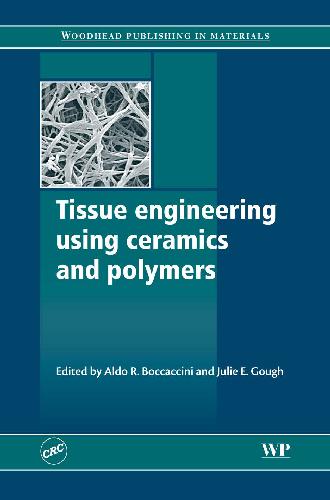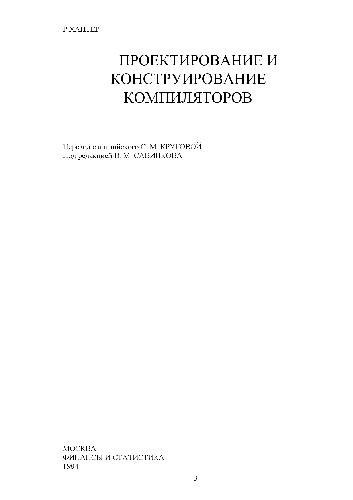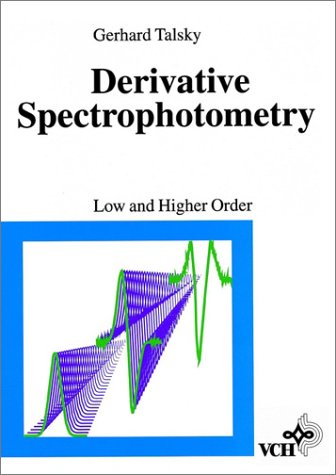Aldo R. Boccaccini, Julie E. Gough9781420044546, 1420044540, 9781845691769, 1845691768
Table of contents :
Cover Page……Page 1
Related titles……Page 3
Title Page……Page 4
ISBN 1845691768……Page 5
Contents……Page 6
Contributor contact details……Page 14
Introduction……Page 20
Part I General issues……Page 22
1.1 Introduction……Page 24
1.2 Characteristics of ceramics……Page 30
1.3 Microstructure of ceramics……Page 33
1.4 Properties of ceramics……Page 37
1.5 Processing of ceramics……Page 43
1.7 Future trends……Page 47
1.8 References……Page 48
2.1 Introduction……Page 53
2.2 Polymeric scaffolds for tissue engineering……Page 54
2.3 Polymeric scaffolds with controlled release capacity……Page 64
2.5 References……Page 68
3.1 Introduction……Page 73
3.2 Synthetic hydroxyapatite……Page 75
3.3 Bioactive glass……Page 79
3.5 Conclusions……Page 88
3.6 References……Page 89
4.1 Introduction……Page 93
4.2 Biodegradable polymers and bioactive ceramics……Page 95
4.3 Composite material approach……Page 99
4.4 Materials processing strategies for composite scaffolds……Page 101
4.5 Case studies……Page 104
4.6 Conclusions and future trends……Page 108
4.7 References and further reading……Page 110
5.1 Introduction……Page 114
5.2 Rejection of tissue-engineered products……Page 116
5.4 Generality of the resistance of tissue-engineered products to immune rejection……Page 123
5.5 Manufacturing consequences……Page 124
5.6 Conclusions and future trends……Page 125
5.9 References……Page 126
6.2 The biochemistry of cell interactions with the ECM……Page 129
6.3 The need for surface modification of scaffolds……Page 135
6.4 General strategies for surface modification……Page 136
6.5 Examples from the literature……Page 137
6.6 Future trends……Page 144
6.7 References……Page 145
7.1 Introduction……Page 150
7.2 Growth factor (GF) delivery……Page 152
7.3 Signalling molecules in solution (parenteral administration)……Page 156
7.4 Signalling molecules physically entrapped in a matrix……Page 157
7.5 Signalling molecules released from a bound state……Page 168
7.6 References……Page 170
8.2 Carrier systems……Page 174
8.3 Commercial systems……Page 182
8.4 Biosensors……Page 183
8.5 Continuous monitoring……Page 188
8.6 Future trends……Page 190
8.7 Conclusions……Page 191
8.8 References……Page 192
9.1 Introduction……Page 196
9.2 X-ray photoelectron spectroscopy (XPS)……Page 198
9.3 Static secondary ion mass spectrometry (SIMS)……Page 208
9.4 Specific sample preparation and acquisition procedures……Page 214
9.5 Conclusions……Page 218
9.6 Future trends……Page 219
9.8 References……Page 220
10.2 The instrument: a comparison with CSEM……Page 225
10.3 Static experiments……Page 231
10.4 Dynamic experiments……Page 233
10.5 Dual beam instruments – an emerging technique……Page 239
10.6 Potential and limitations……Page 240
10.8 References……Page 242
11.2 General considerations and experimental design……Page 247
11.3 CLSM……Page 249
11.4 Combining techniques……Page 262
11.5 Future trends……Page 265
11.6 References……Page 266
12.1 Introduction……Page 269
12.2 Principles of Raman spectroscopy……Page 272
12.3 Characterisation of living cells……Page 275
12.4 Characterisation of tissue engineering scaffolds……Page 280
12.5 Conclusions and future trends……Page 284
12.6 References……Page 285
Part II Tissue and organ generation……Page 288
13.1 Introduction……Page 290
13.2 Native cells……Page 291
13.3 Biomaterials……Page 292
13.4 Alternate cell sources: stem cells and nuclear transfer……Page 294
13.5 Tissue engineering of specific structures……Page 298
13.6 Cellular therapies……Page 305
13.7 Conclusions and future trends……Page 309
13.8 References……Page 310
14.2 Principles of bone biology……Page 315
14.3 Basics of bone remodelling……Page 320
14.4 Skeletal tissue reconstruction – a tissue engineering approach……Page 325
14.5 Conclusions……Page 335
14.7 References……Page 336
15.1 Introduction……Page 340
15.2 Tissue engineering……Page 341
15.3 Scaffolds and biomineralization……Page 348
15.4 Conclusions and future trends……Page 351
15.5 References……Page 352
16.1 Introduction……Page 356
16.2 Cell sources……Page 357
16.3 Construct-based strategies in myocardial tissue engineering……Page 364
16.4 Conclusions and future trends……Page 371
16.6 References and further reading……Page 373
17.2 The impact of disorders of the intervertebral disc (IVD) on modern society……Page 378
17.3 The normal anatomy, function and cell biology of the IVD……Page 379
17.4 The pathobiology of IVD degeneration……Page 380
17.5 Treatment of degeneration of the IVD……Page 385
17.6 The place of biomaterials in proposed strategies for managing IVD degeneration……Page 387
17.7 Tissue regeneration and the IVD……Page 392
17.8 Conclusions……Page 393
17.9 Future trends……Page 394
17.10 Sources of further information and advice……Page 395
17.11 References……Page 396
18.1 Why do we need tissue-engineered skin?……Page 400
18.2 Key events in the development of tissue-engineered skin……Page 404
18.4 Key steps in development of tissue-engineered skin for clinical use……Page 406
18.5 Challenges in converting research into products……Page 407
18.6 Clinical problems in the use of tissue-engineering skin……Page 412
18.7 Unexpected results from using 3D skin models……Page 417
18.8 Future trends……Page 419
18.9 References……Page 420
19.1 Introduction……Page 425
19.3 Clinical and commercial applications of engineered liver tissue……Page 426
19.4 Approaches to liver tissue engineering……Page 428
19.5 Conclusions……Page 436
19.7 References……Page 437
20.2 Present status of kidney regeneration……Page 442
20.4 System configuration for bioartificial kidneys……Page 444
20.5 Past and current status of development of bioartificial kidneys……Page 447
20.6 Attachment and proliferation of tubular epithelial cells on polymer membranes……Page 450
20.7 Function of tubular epithelial cells on polymer membranes……Page 454
20.8 Evaluation of a long-term function of LLC-PK1 cell-attached hollow fibre membrane……Page 456
20.9 Improvement of the components of a portable bioartificial kidney developed for long-term use……Page 459
20.10 Conclusions and future trends……Page 462
20.11 References……Page 463
21.1 The bladder – structure and function……Page 466
21.2 The clinical need for bladder reconstruction……Page 468
21.3 Concepts and strategies of bladder reconstruction and tissue engineering……Page 469
21.4 Review of past and current strategies in bladder reconstruction……Page 470
21.5 Cell conditioning in an external bioreactor……Page 478
21.6 Future trends……Page 479
21.8 References……Page 480
22.1 Peripheral nerve……Page 487
22.3 Peripheral nerve repair……Page 489
22.4 Bioengineered nerve conduits……Page 490
22.5 Matrix materials……Page 494
22.6 Cultured cells and nerve constructions……Page 497
22.8 References……Page 505
23.2 Lung structure……Page 518
23.3 Sources of cells for lung tissue engineering……Page 520
23.4 Lung tissue constructs……Page 522
23.6 References……Page 526
24.2 Approaches to tissue engineering of the small intestine……Page 529
24.3 Artificial scaffolds……Page 531
24.4 Intestinal lengthening using artificial scaffolds……Page 535
24.5 Transplantation of intestinal stem cell cultures……Page 537
24.6 Growth factors……Page 544
24.7 Future trends……Page 545
24.9 References……Page 546
25.1 Introduction……Page 550
25.2 Fundamentals of continuum micromechanics……Page 556
25.3 Micromechanical representation of monoporosity biomaterials made of hydroxyapatite……Page 559
25.4 Model validation……Page 563
25.5 Continuum micromechanics model for ‘hierarchical’ hydroxyapatite biomaterials……Page 572
25.6 Conclusions and future trends……Page 578
25.7 Appendix: Homothetic shape of failure criterion for hydroxyapatite biomaterials……Page 579
25.8 Nomenclature……Page 580
25.9 References……Page 584
26.2 Structure, cellularity and extracellular matrix……Page 587
26.3 The need for cartilage repair……Page 588
26.4 Current treatments including autologous chondrocyte transplantation……Page 589
26.5 Cell source……Page 590
26.6 Materials……Page 591
26.7 Growth factors and oxygen……Page 597
26.8 Loading……Page 600
26.10 Conclusions and future trends……Page 601
26.11 References……Page 602
B……Page 608
C……Page 610
E……Page 612
F……Page 613
G……Page 614
I……Page 615
L……Page 616
M……Page 617
P……Page 618
R……Page 620
S……Page 621
T……Page 623
W……Page 624
X,Y,Z……Page 625







Reviews
There are no reviews yet.